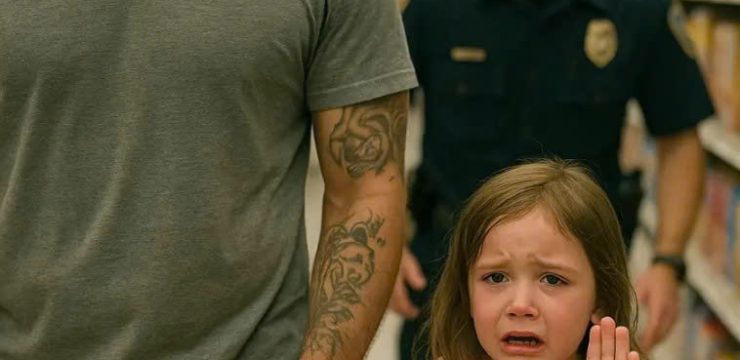The early autumn fog drifted through the small streets of Maplewood like a slow-moving river, curling around streetlamps and weaving quietly between houses. The mist carried the kind of hush that made October mornings feel both beautiful and lonely. As I stepped onto the front porch of the home I had recently begun renting, I tightened my jacket against the cold and wrapped both hands around a warm mug of coffee. I was still adjusting to the idea of beginning life over again at fifty-two, trying to convince myself that reinvention was not only possible but necessary.

My name is Elena Martinez. Maplewood—this quiet neighborhood outside Seattle—was meant to be a fresh start after my mother’s death left me stranded between grief and confusion. I had inherited her home, but every corner of it carried memories that clung too tightly. I sold it almost immediately. The insurance settlement from the accident that took her gave me the financial space to step back and breathe, but emotional healing wasn’t something money could rush. I found this rental house with the intention of staying only long enough to figure out where my life was supposed to go next.
One of the first things I noticed about Maplewood was its softness. People waved from their driveways. Kids biked without helmets, skinned knees being the worst injury most parents expected. Rows of towering oak trees lined the sidewalks, and as fall settled in, they sprinkled the streets with amber and crimson leaves. It was a place that felt safe even to someone whose world had recently fallen apart.
Every morning, I stood on my porch, sipping coffee as part of a routine that made me feel grounded. That was when I began noticing the cat. At first, it wasn’t remarkable—simply a sleek black cat with white markings who seemed to roam freely. But it wasn’t the cat itself that caught my attention. It was the way he behaved.
He wasn’t wandering or lounging like neighborhood cats typically do. Instead, every morning he sat beside a single storm drain at the corner of Elm Street and Maple Avenue. Not any storm drain—that storm drain. Day after day, he positioned himself right next to it, sitting with unnerving stillness as if guarding something. Occasionally, he let out distressed-sounding meows, pacing around the grate before settling again, always staring intently into the darkness below.
From a distance, I couldn’t read his collar tags, but his glossy coat and healthy weight suggested that he belonged to someone who cared for him. Still, his daily fixation on the storm drain grew harder to ignore.
At first, I chalked it up to simple feline curiosity. Maybe a sound came from the pipes underground. Maybe a small animal like a mouse had drawn him there. But as days turned into weeks, my casual curiosity morphed into concern. There was something urgent about the way the cat behaved—pawing, pacing, meowing, returning again and again as if hoping to draw attention.
One gray Tuesday morning in early November, I finally decided to walk over. My grocery run would take me past the storm drain anyway. As I approached, the cat lifted his head and locked eyes with me. His green eyes shone with an intensity that stopped me in my tracks.
“What are you looking at, sweetheart?” I murmured, lowering myself to get closer.
He answered with frantic meows, pawing at the metal grate and then backing up, watching me, then the grate, then me again. His urgency rattled me. Something wasn’t right.
I peered through the bars of the storm drain, blinking as my eyes tried to adjust to the dark. At first, I saw nothing unusual—just concrete walls and a narrow drop leading into the drainage chamber below.
Then the shadows shifted.
My breath froze in my chest.
Pressed against the concrete wall inside the storm drain was a small shape—too still, too fragile. I blinked hard, praying I was imagining it. But when the shape moved ever so slightly, there was no denying it. A child. A little girl curled on a narrow ledge above the waterline. Her dark hair tangled around her face, her small body motionless except for a faint twitch.
A blanket. A water bottle. Food containers.
Someone had placed them there.
“Oh my God,” I whispered, my voice cracking. Then louder, panic overtaking shock, “Help! Somebody help! There’s a child down here!”
Within moments, doors opened across the neighborhood. Residents hurried over—Mrs. Chen from the corner house, a young father with grocery bags still in his arms, a teenage babysitter who lived across the street. A crowd formed faster than I expected, each face reflecting confusion and concern.
“There’s a girl down there,” I explained, pointing with trembling hands. “She’s alive—I think. Someone’s been giving her supplies.”
The teenager gasped. “Is she… is that Lily? The missing girl? She’s been gone for almost a week!”
Several neighbors checked their phones. Alerts matched the description.
Sirens wailed in the distance. The fire department, police officers, and paramedics arrived rapidly. A construction worker named James brought a powerful flashlight from his truck. When he shone it into the chamber, the whole group gasped.
There she was—a little girl, around eight years old, pale and weak but conscious. The supplies around her confirmed she had not fallen accidentally. Someone had cared for her, fed her, kept her hydrated. But who?
A soft voice rose from below. “My name is Lily,” she whispered.
A murmur of recognition swept the crowd.
James and the fire crew worked urgently to lift the heavy grate without dislodging debris that might fall onto the child. The rescue took nearly two hours. Throughout the entire process, the black cat stayed nearby, watching intently.
He wasn’t just observing.
He was waiting.
When the paramedics finally lifted Lily out of the drain, applause, tears, and disbelief filled the air. She was dehydrated and weak but alive.
As they prepared to take her to the hospital, a paramedic gently asked, “Honey, how did you survive down there?”
Lily turned her head. Her eyes searched until they found the black cat.
“Shadow took care of me,” she said.
Gasps rippled through the crowd.
“He brought me food and water every day. He stayed with me. He didn’t leave me.”
The cat—whose real name was Midnight—belonged to the Rodriguez family. They later admitted he had been acting strangely for days, disappearing for long stretches and refusing meals. They assumed he was exploring or sulking. They never imagined he had taken on the role of a guardian.
Investigators pieced together the story: Lily had gotten lost taking a shortcut home during a rainstorm. She had crawled into what she thought was a safe culvert and ended up trapped in the storm drain. Midnight found her. And in a display of animal intelligence that stunned professionals, he scouted the neighborhood for supplies—water bottles from recycling bins, snacks from an unlocked car, a small blanket from a laundry line.
He dropped each item through the grate.
He kept her alive.
He kept coming back.
He never stopped trying to get someone’s attention.
If I hadn’t finally followed his signals, Lily might not have survived another night.
The story spread across the community like wildfire. News crews arrived. Police praised the cat’s instincts. Lily’s reunion with her parents became the emotional center of every local broadcast. Midnight—silent, humble, steadfast—became a symbol of loyalty and hope.
Eight months later, Lily is thriving, and she visits Midnight every week. The city installed new safety measures around storm drains. And Maplewood, once just a place I hoped would temporarily shelter my grief, became the community that helped me heal.
Sometimes heroes don’t have badges or uniforms.
Sometimes they have whiskers and four paws—and a heart that refuses to give up.





